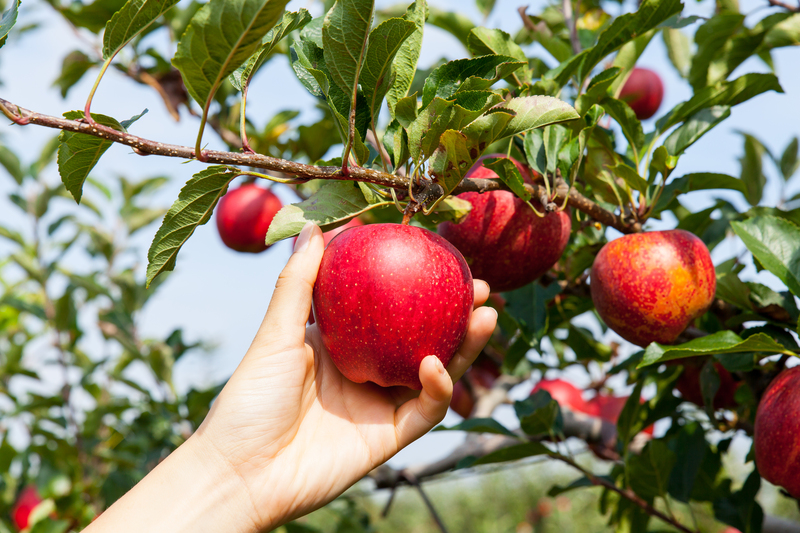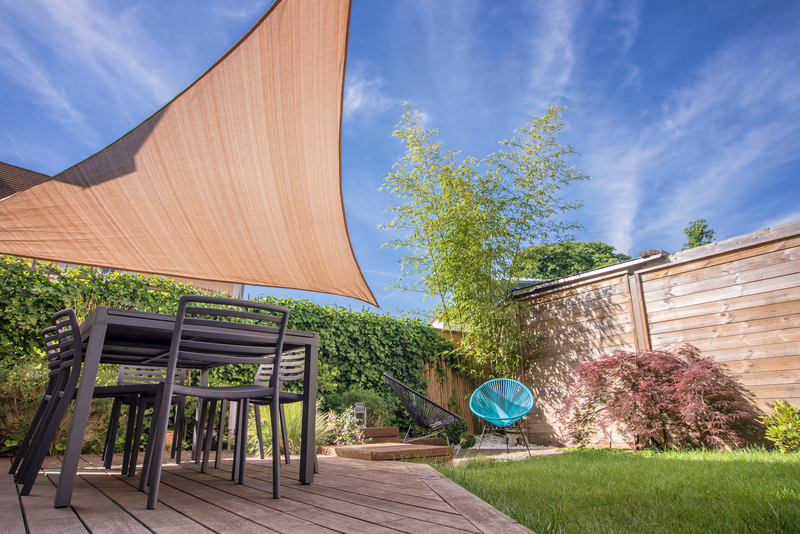Achieve a Pristine Garden with These 3 Weed Control Tips
Posted on 15/09/2025
Achieve a Pristine Garden with These 3 Weed Control Tips
If you're passionate about gardening, you know that weeds are among the most persistent and unwelcome visitors. They compete with your beloved plants for nutrients, sunlight, and water, often stunting growth or smothering delicate flowers and vegetables. To achieve a pristine garden, effective weed control is essential. In this comprehensive guide, we'll reveal three foolproof weed prevention and elimination methods to help transform your space into a beautifully maintained, weed-free sanctuary.
Why Effective Weed Control Matters
Achieving and maintaining a pristine, weed-free garden is about more than just aesthetics. Here's why effective weed management is crucial:
- Healthy Plants: Weeds rob nutrients from your preferred vegetation.
- Disease Prevention: Many weeds harbor pests and diseases that can spread to crops and ornamentals.
- Reduced Maintenance: Keeping weeds in check lessens the time and effort you spend on untangling overgrown beds.
- Increased Yields: Especially in vegetable gardens, weed control directly influences productivity and quality.

Tip 1: Mulching--Nature's Barrier Against Weeds
One of the most effective ways to attain a stunning, weed-free landscape is through mulching. Not only does mulch enhance soil moisture retention and temperature regulation, but it also smothers pesky weeds before they even sprout.
How Mulch Helps with Weed Control
- Suppresses Weed Growth: By blocking sunlight, mulch prevents weed seeds from germinating.
- Improves Soil Quality: Organic mulches break down over time and enrich the soil, benefiting your garden in multiple ways.
- Retains Soil Moisture: Mulch keeps the soil cool and moist, making it less hospitable for weed seeds to thrive.
Best Types of Mulch for Weed Prevention
There are many mulch varieties, each suitable for different gardens and needs:
- Organic Mulch: Sharpen your weed defense using wood chips, shredded bark, straw, pine needles, or cocoa hulls.
- Inorganic Mulch: Materials like gravel, landscape fabric, or rubber chips are effective in pathways or driveways.
Application Tips
- Spread a 2-4 inch-thick layer around your plants, taking care not to pile it against stems or trunks.
- Check and replenish mulch each season to maintain its weed-stopping efficacy.
Tip 2: Manual and Mechanical Weed Removal Techniques
While mulching is an excellent weed prevention strategy, sometimes persistent or established weeds require a hands-on approach. Manual and mechanical weed removal is essential for the most invasive or entrenched weeds, ensuring your garden remains immaculate.
Hand Pulling: Simple Yet Effective
- Pull Early: Remove weeds when they're young--this is the best chance to eradicate them before they set seed.
- Moist Soil Advantage: After watering or a rainfall, soil is softer, making it easier to remove the entire root system.
- Use Both Hands: For stubborn perennials like dandelions, grip at the base and gently tug to extract the whole root.
Weeding Tools: Boost Your Efficiency
Leverage specialized weeding tools to tackle deeper or tough-rooted weeds.
- Garden Hoe: Ideal for slicing off weeds at the surface.
- Dandelion Digger: Removes deep taproots with ease.
- Weed Puller: Great for back-friendly, stand-up weed removal in lawns and borders.
Pro Tips for Manual Weed Control
- Consistency is Key: Develop a regular weeding routine, especially during the growing season.
- Dispose Correctly: Compost only seed-free weeds; otherwise, bag and discard to prevent reseeding.
Tip 3: Proactive Cultural and Preventive Practices
The most pristine gardens combine mulching and manual efforts with proactive preventive strategies. By cultivating strong, healthy plants and crowding out weeds, you'll foster a vibrant landscape where undesirable plants struggle to survive.
Maintain Healthy, Dense Plantings
- Space Plants Wisely: Select ground covers, dense perennials, or closely spaced plantings to shade soil and inhibit weed growth.
- Rotate Crops: In vegetable beds, use crop rotation schemes to disrupt weed life cycles.
- Choose Competitive Plants: Incorporate vigorous growers that naturally suppress weeds by outcompeting them for light and nutrients.
Watering and Fertilizing with Purpose
Be strategic with water and nutrients to favor your desired plants:
- Use Drip Irrigation: Target water to roots of specific plants, not to bare soil where weed seeds linger.
- Spot Fertilization: Avoid broadcasting fertilizer, which feeds weeds as well as crops. Use slow-release or targeted feeding.
Quick Response to New Weeds
- Scout Regularly: Walk your garden weekly. Pluck out new arrivals swiftly before they multiply.
- Don't Let Seedheads Develop: Nip weedy growth in the bud, literally, to prevent future infestations.
Common Weed Control Mistakes to Avoid
Even the most diligent gardeners can stumble into errors that set weed control efforts back. Learn from these common missteps:
- Neglecting Early Action: Waiting too long allows weeds to flower and set seed, exacerbating the problem.
- Improper Mulch Application: Too little mulch or piling it against plant stems can do more harm than good.
- Over-Tilling: While tilling can disrupt weeds, excessive disturbance brings hidden seeds to the surface, causing future problems.
- Poor Tool Maintenance: Dull or rusty tools are less effective and can damage desirable plants during weeding.
Are Herbicides the Solution?
It's tempting to reach for chemical solutions, but successful weed management in a healthy garden should rely mainly on physical and cultural methods. Herbicides may have a place in severe infestations, but always exercise caution:
- Choose Selective Options: Use only as directed, targeting specific weed types without harming beneficial plants.
- Consider Organic Alternatives: Vinegar-based sprays or commercial organic formulas can sometimes help, though these may only affect above-ground parts.
- Protect Pollinators and Soil Life: Minimize non-target impacts by avoiding applications during bloom or wind.
Year-Round Weed Prevention Calendar
Consistent and seasonal attention is vital. Here's a quick calendar for optimal weed control:
- Spring: Apply mulch, remove overwintered weeds, and inspect beds weekly.
- Summer: Tighten up mulching and be vigilant as weeds grow rapidly with heat and rain.
- Fall: Uproot mature weeds, amend soil, clear seedheads, and refresh mulch for winter.
- Winter: Cover bare soil with leaves or organic matter to suppress early spring weeds.

Frequently Asked Questions About Weeds and Garden Cleanliness
What are the most common garden weeds?
- Dandelion (Taraxacum officinale)
- Crabgrass (Digitaria sanguinalis)
- Bindweed (Convolvulus arvensis)
- Chickweed (Stellaria media)
- Canada Thistle (Cirsium arvense)
How do you permanently get rid of weeds?
Permanent results depend on a combination of methods--regular mulching, vigilant hand-pulling, and proactive planting. There is no single instant solution, but consistent application of these weed-prevention tactics will drastically reduce unwanted growth.
Does boiling water kill weeds?
Yes, pouring boiling water directly onto weeds can kill them. It's a quick fix for driveways and pathways, but not suitable for areas with desirable plants due to risk of harm.
Conclusion: Transform Your Garden with Smart Weed Control
A lush, pristine garden isn't out of reach--it simply requires the right strategies and regular attention. By mulching effectively, maintaining diligent manual removal habits, and embracing cultural prevention practices, you'll enjoy a vibrant, weed-free landscape that wows with every season.
- Mulch for continuous protection
- Stay on top of manual weeding
- Embrace preventive gardening habits
By following these top weed control tips, your garden will not only be beautiful but healthier and easier to maintain year after year. Make these practices part of your gardening routine and confidently achieve that immaculate, eye-catching landscape you desire!

